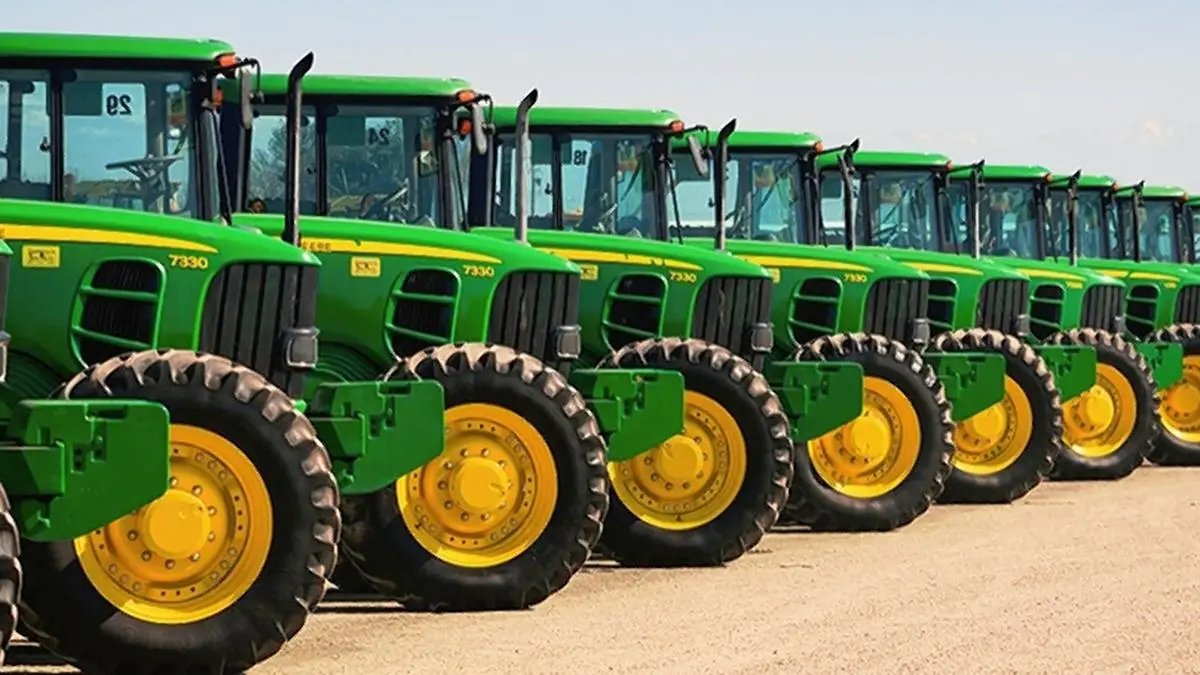The agricultural renaissance: Modern farming, technology, and new crops

Renowned agricultural scientist, Dr MS Swaminathan, had always desired the “Indian agriculture to become intellectually satisfying and economically rewarding so that it could trigger job-led economic growth”.
Three enterprising farmers, Hariman Sharma from Himachal Pradesh, L Hangthing from Nagaland and Subhash K Sharma from Maharashtra – who were honoured with this year’s Padma Shri awards for their innovative contributions and sustainable and viable farming practices – seem to be living that dream of the ‘architect of the green revolution in India.’
In fact, Hariman Sharma, known as the “Apple Man of India”, is being credited with revolutionising the apple cultivation landscape, using his own self-pollinating, low chilling apple variety called HRMN–99, a juicy, nutritious strain that is highly suited for warmer climates, exhibiting resistance to diseases. In other words, he has made apple farming viable in tropical, sub-tropical, and plain regions where summer temperatures reach 40-45°C. This is expected to transform apple farming globally across the world, making India a powerhouse in the fruit production.
Ushering in Green Revolution 2.0
Across India’s vast hinterlands, an agriculture renaissance is taking place aptly dubbed ‘Green Revolution 2.0’ with farmers eagerly adopting modern farming practices, innovating in their own way and sharing it, deploying new age farm implements, sources of power and technology besides scouring the Internet for more productive and efficient crops that can be cultivated in the most sustainable way. Smart farmers like Hariman Sharma have proven that agriculture can be both intellectually satisfying and economically rewarding.
While the Green Revolution in the 1960s had shown us the benefits of modernisation, making India a self-sufficient nation in many staples, this time, factors like deeper soil degradation, alarmingly low water tables, climate change and the possibility of improving the livelihoods of small farmers are quickening the change. The government, determined to ensure food security, income prospects and sustainable farming practices, is playing a vital role in this revolution.
Adopting modern and sustainable farming methods: Indian farmers today realise that only a sustainable agriculture can effectively address our environmental and economic needs. Increasing climate events are inducing the interest in the adoption of crops that are resistant to soil degradation, drought, floods, and extreme temperatures. Farmers are far more aware of the impact of chemical fertilizer and pesticide which they reduce through strategies like integrated pest management and soil health management. A study by McKinsey shows that the Government incentives have been highly successful in helping farmers adopt sustainable practices. It notes that crop rotation continues to be the most prevalent practice.
Localised innovations are also galore these days. For example, in Gujarat, which is in the throes of an unprecedented industrialisation, the resurgence of agriculture is visible thanks to a humble and highly effective fertilizer, castor cake, a byproduct of castor oil extraction. Farmers today recognise its transformative effects on crop yields, soil fertility, and pest management due to its essential nutrients, including nitrogen, phosphorus, and potassium. Heralding true sustainable agriculture, Castor cake is helping cotton, sugarcane, pulse, and vegetable farmers to reap bumper harvests.
New crops improve productivity, sustainability
India recently announced the development of two genome-edited rice varieties, Kamala and Pusa DST Rice 1 that can enhance our paddy yields by up to 30 per cent. Impressively, they are drought-resilient and early-ripening, and require less nitrogen. Last year, we had launched 109 high-yielding, climate-resilient, and bio-fortified crop varieties, including 34 field crops and 27 horticultural crops, that had a positive impact on the environment, exemplifying the “lab to land” programme. Over the next 2 years, nearly one crore farmers will be inducted into the natural farming, supported by certification and branding.
The government has also been supporting farmers in areas – which also impact our food inflation – such as pulses and fruits and vegetables through better quality seeds, modern agronomic practices such as zero tillage, efficient resource management and crop diversification. In the productivity areas, farmers continue to face worker shortages, growing input prices, and water scarcity, which, they counter to an extent by using modern agri implements, drip irrigation, and ‘bio-based’ products that enhance yields.
Latest technology gaining acceptance
Thanks to the information revolution, farmers are aware of the most modern technology that could help them through the sowing-to-harvesting cycle. It would not be surprising if a rural farmer talks about the use of GPS or GIS to optimise resource use and crop management, or the hydroponics that help them grow plants without soil, using nutrient-rich water solutions. They now access market data, weather forecasts, and information on best practices using public digital platforms. Studies show that farmers of specialty crops, who export their produce, heavily leverage digital channels to facilitate their business.
Many enterprising farmers have gone beyond poultry to increase income avenues by taking up Aquaculture which includes Shrimp cultivation as well as Aquaponics that combines raising fish with hydroponics. They constantly seek information on pest resistance crops, yield forecast through AI tools and even integrated sensors to monitor climate and crop conditions. Drones and robotics are becoming a part of the precision nutrient spraying and crop monitoring in modern farmers’ lives.
Technology is swiftly pervading, seamlessly and efficiently, across all core farming areas in India. Today, Indian farmer is getting accustomed to modern irrigation techniques and management practices that improve water usage efficiency, productivity and savings. Adopting technologies like drip and sprinkler irrigation, SCADA systems, and the IoT for real water management besides mulching and precision irrigation are creating utmost curiosity among farmers. Schemes like the Pradhan Mantri Krishi Sinchayee Yojana (PMKSY) has already brought about efficiency in irrigation infrastructure and water usage efficiency. Farmers are already seeing the benefits like higher crop yields, better income due to lower input costs and sustainable and viable farming.
With the rural areas leading the Internet usage, several apps have spawned in the last few years, providing farmers with almost all aspects of farming, from weather forecasting, latest prices and even crop management ideas. These include Kisan Suvidha, Crop Insurance that details premium calculations, Arka Bagwani with farm research, and Farmonaut that provides mapping, scouting, and field monitoring. There are apps for crop reminders and access to experts. AI-powered platforms for farm management, livestock management and even for intrinsic insights for precision farming.
States jostle to promote agri innovations and incomes
States are also competing with each other in facilitating farmers. Almost all Indian states now actively promote farmer welfare measures, fully utilising the Centre’s financial and income supporting schemes, infrastructure creation, technology upgradation and other innovative local ideas.
Madhya Pradesh, for example, exploits technological adoption to give wider market access to its farmers. It has already signed an MoU with the World Economic Forum to set up a Food Innovation Hub India (FIH-I) platform for deploying innovations and emerging technologies in food and agriculture. It also promotes fruit cultivation and organic farming using several schemes.
In Bihar, advanced farming methods are helping farmers utilise the precision agriculture, minimising waste and promoting sustainable farming practices. Biotechnological programmes are genetically identifying hybrid seeds of maize and paddy crops through DNA fingerprinting, further developing drought and pest resistant crops with higher nutritional value. Jharkhand farmers are transforming their agricultural practices, using initiatives like PM Kusum Yojana which provides easier access to solar-powered irrigation systems.
Digital agronomy tools get farmer’s attention
Given the vastness of Indian farming, the adoption of modern farming technologies such as precision hardware and farm management software has been moderate due to lesser availability of technical support and initial implementation costs. However, many are showing interest in digital agronomy tools such as yield monitoring, and this is where the government support comes in handy.
In the last Budget, India had taken defined steps to integrate a massive 14.5 crore farming community through the implementation of a Digital Public Infrastructure (DPI) in agriculture. Further, it has announced steps like the Agricultural Marketing Infrastructure (AMI) for the construction of storage capacity in rural areas and the National Agriculture Market (e-NAM) – an electronic marketplace for farmer produce with many buyers.
Massive agri infrastructure projects under way
Another massive project, the Rs 1 lakh crore Agriculture Infrastructure Fund (AIF) is aimed at creating viable post-harvest infrastructure for storage by farmers through interest subvention and financial support. The financing facility is expected to create a viable agri support system at the farm-gate and aggregation points, involving agri entrepreneurs, farmers, Cooperative Societies, Farmers Producer Organizations, start-ups, state agencies and state sponsored PPPs. The larger goal is to cut wastage and post-harvest losses by as much as 20 per cent at the farm gate itself.
The focus is on setting up post-harvest management projects like supply chain services including e-marketing platforms, warehouse, cold chain, logistics facilities, primary processing centres and other projects for building community farming assets. All formal lending institutions would be involved, ably supported by Nabard and the Department of Agriculture, to mobilize a medium to long term debt financing facility for viable projects to improve agriculture infrastructure in the country.
Conclusion
In the last decade or so, the agriculture sector has got unprecedented support from the government through several new policies and programmes. An example is the ‘Digital India’ campaign that is steadily creating a digitally empowered society, especially to integrate the rural areas and the farmers into the mainstream. From the proverbial ‘farm to fork,’ farmers get a holistic support system that makes agriculture economically viable and perhaps a worthwhile intellectual pursuit.
Today, a farmer can access direct marketing means and even bulk private buyers thereby improving the prospects of income and innovation. By integrating technology, modern education, and inclusive policies, India can anticipate a future in which agriculture serves as both a sustainable enterprise and a lifestyle that provides economic stability for millions of farmers.
The author is Business Head – Retail Agriculture & Gold Loans, Kotak Mahindra Bank
Published on August 23, 2025


